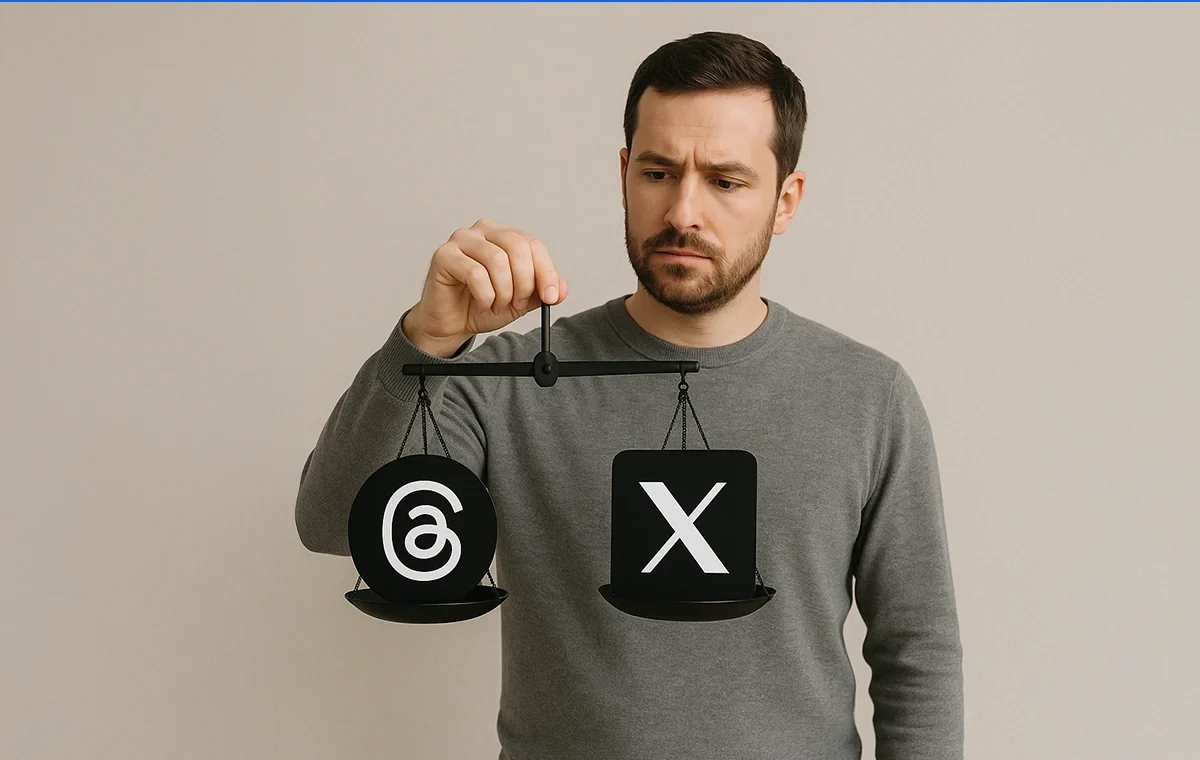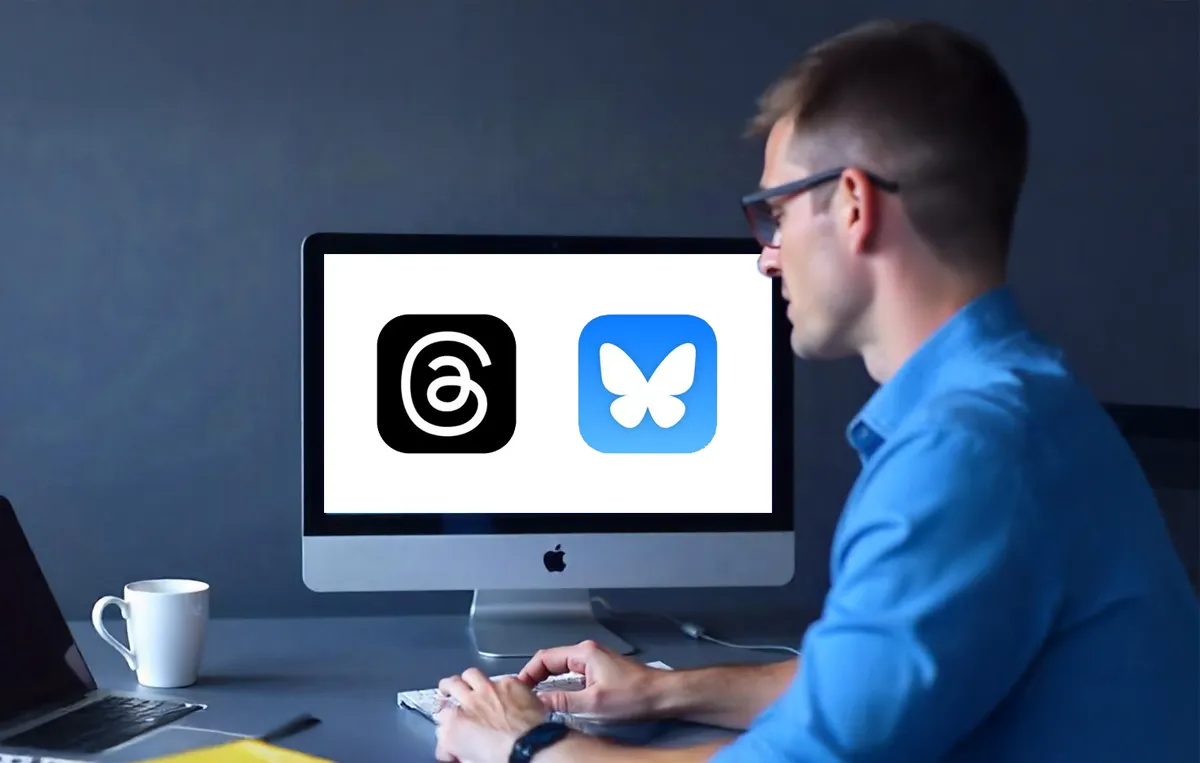Ever since Elon Musk took the reins at X (formerly Twitter), the social media landscape has been buzzing with debates about its future. Amid these changes, Bluesky has gained attention as an exciting alternative for businesses and users.
Both platforms let users share posts, images, and videos while interacting through replies and likes. However, their different content moderation and user control approaches have stirred debates about their impact on communities.
So, how does Bluesky stack up against Twitter, and which one might be the right fit for your business?
In this blog, we’ll take a closer look at Bluesky vs X (Twitter), comparing their usability, features, audience types, and more. Whether you’re exploring fresh opportunities with Bluesky or wondering if Twitter still holds its ground for businesses, this guide will help you decide which platform suits your needs better.
Bluesky vs X (Twitter): Quick Summary
Both platforms offer unique features and cater to different types of audiences. That makes the decision even more interesting. Here’s a quick comparison:
| Aspect | Bluesky | X (Twitter) |
| Platform Structure | Built on the AT Protocol, it offers a decentralized architecture for user control. | Operates as a centralized platform, with all content management handled by a single entity. |
| Algorithmic Control | Provides users the ability to choose or create custom algorithms for personalized content. | Users have limited control over content algorithms, which are centrally managed. |
| Content Moderation | It employs a modular moderation system that allows communities to set their policies. | Uses a centralized approach for content moderation, with uniform policies across the platform. |
| Privacy Practices | Prioritizes user privacy by avoiding invasive data collection and refrains from targeted ads. | Collects user data for targeted advertising purposes. |
| User Interaction | Features a user interface with replies, reposts, quotes, and likes. | Provides a familiar interface with replies, retweets, quote tweets, and likes. |
| Trending Topics | Introduced a ‘Trending Topics’ feature in beta for popular discussions. | Offers a well-established trending topics section for popular conversations. |
| User Verification | Offers a domain-based handle system for user verification. | Has a centralized verification system based on internal criteria. |
| Post Scheduling | No native scheduling features | Offers native scheduling with X Pro subscription |
| Advertising Model | Does not run advertisements and focuses purely on user experience. | Relies on advertising revenue, displaying targeted ads to users. |
Bluesky, backed by former Twitter CEO Jack Dorsey, introduces a decentralized model that shifts control into the hands of its users. With Bluesky, businesses can enjoy more flexibility, such as customizing how they interact with their audience and having greater autonomy over content visibility.
But here’s where it gets interesting: Bluesky is growing fast. The platform has already hit 38 million users, doubling its numbers within two months (as of late 2024), according to Statista. While it’s still far from Twitter’s scale, this rapid growth shows the rising interest in alternatives prioritizing privacy and user control.
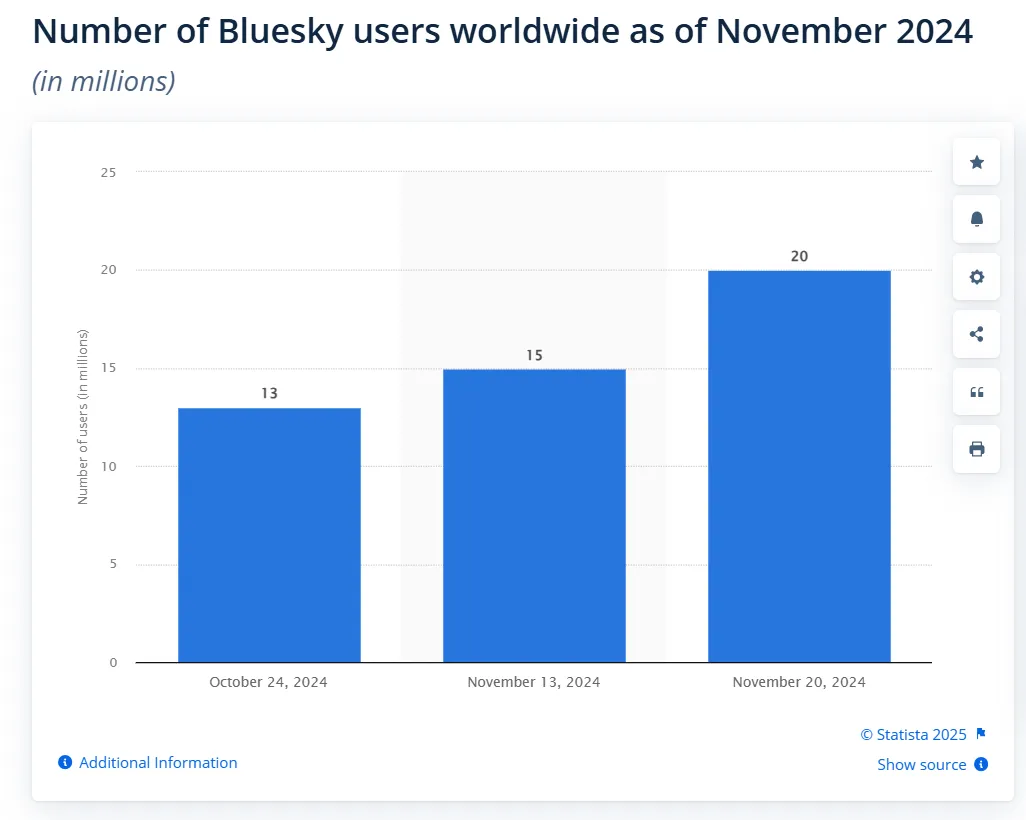
Conversely, Twitter sticks to its centralized roots, where the platform takes charge of content distribution, algorithms, and data management. For businesses, this means less control over how posts appear in timelines or who gets to see them.
That said, Twitter still holds a massive advantage with its 586 million active users as per DataReportal analysis. This kind of reach is hard to ignore, especially when combined with advanced advertising tools that allow businesses to target specific demographics. For brands looking to maximize visibility through paid campaigns, Twitter remains a solid option.
We’ve only scratched the surface. Now, let’s take a closer look at a more detailed comparison of Twitter vs Bluesky.
Bluesky vs X (Twitter): In-depth Comparison
Bluesky and Twitter take different approaches to structuring their platforms, which can influence how businesses use them. Let’s see how.
1. Platform Structure: Bluesky vs X (Twitter)
Bluesky Platform Structure:
Bluesky is built on the AT Protocol, which allows users to create custom feeds based on specific topics or interests. This feature is particularly helpful for businesses looking to target niche audiences. For instance, a business focused on tech or fitness could set up a custom feed where their content reaches users genuinely interested in those topics.
It creates a space that reflects its brand values. This also allows businesses to create moderation policies and manage their content directly, which can help build trust with their audience.
X (Twitter) Platform Structure:
Twitter, on the other hand, is a centralized platform. Twitter itself handles all content, moderation, and data management. Businesses use the platform as it is without the ability to customize it for their specific needs.
Key Takeaways for Businesses:
When it comes to businesses, the ideal platform depends on their size and goals. For instance, a local artisan brand might use Bluesky to host a customer server because it can create a direct connection with its audience. A global retail chain might prefer Twitter for its established audience and tools, which allow it to promote new products quickly.
2. Demographic Breakdown: Bluesky vs X (Twitter)
Understanding the demographics of Bluesky and Twitter can help businesses decide which platform aligns best with their target audience. Here’s a comparison of user age and gender distributions on both platforms:
Bluesky User Demographics:
Age Distribution:
Bluesky’s November 2024 data shows 1 in 3 users aged 18-24 as per Exploding Topics.
- 18 to 24 years: Approximately 35% of users.
- 25 to 34 years: Around 28%.
- 35 to 44 years: About 16%.
- 45 to 54 years: Roughly 10%.
- 55 to 64 years: Close to 7%.
- 65 and older: Approximately 5%.

Gender Distribution:
More than half of Bluesky users are male.
- Male: Around 63%.
- Female: Approximately 36%.
Bluesky’s younger audience, mainly those aged 18-34, makes it a good choice for businesses targeting Gen Z and millennials. These users are often early adopters of new platforms and look for personalized and engaging experiences. Bluesky is gaining traction among communities like tech enthusiasts and niche content creators with its customizable features.
X (Twitter) User Demographics:
Age Distribution:
- 18 to 24 years: About 34%.
- 25 to 34 years: Approximately 37%.
- 35 to 44 years: Around 16%.
- 45 to 54 years: Roughly 8%.
- 55 to 64 years: Close to 4%.
- 65 and older: Approximately 2%.
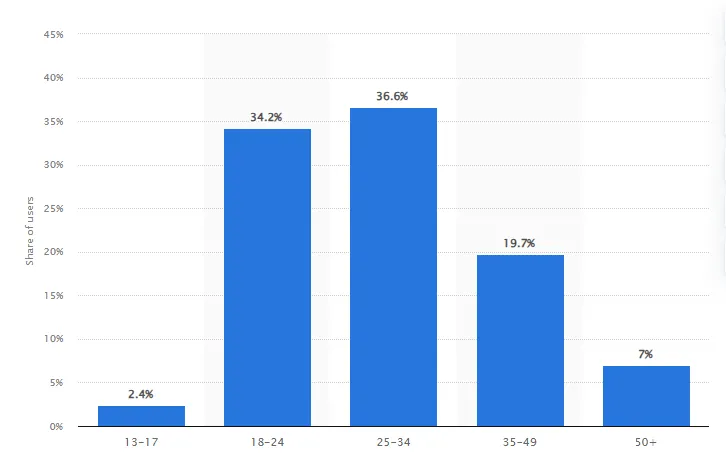
Gender Distribution:
- Male: Around 61%.
- Female: Approximately 39%.
Twitter also has a strong young adult presence, with about 71% of its users aged 18–34. However, it caters to a slightly broader age range and offers a more balanced gender distribution than Bluesky. Known for its quick updates and trending topics, Twitter is widely used for news, entertainment, and global conversations.
Key Takeaways for Businesses:
When comparing the demographics of Bluesky and Twitter, it’s clear that both platforms cater to a younger audience but with notable differences that businesses should consider.
Bluesky’s user base skews younger, with about 35% of its users aged 18 to 24 and another 28% in the 25 to 34 range. Its customizable and decentralized features appeal to niche communities and businesses aiming for targeted engagement. For example, a brand focusing on gaming or tech gadgets might thrive on Bluesky, where it can connect directly with a younger, male-dominated audience.
On the other hand, Twitter’s larger and more diverse user base is ideal for businesses looking to reach a global audience quickly. Its balanced gender distribution and established user habits make it suitable for brands launching widespread campaigns or engaging in real-time conversations.
This combination of age diversity and slightly higher female representation could make Twitter a better fit for businesses looking to engage a more varied audience with established engagement habits.
If you’re still exploring which emerging platform better aligns with your brand goals, this detailed comparison between Bluesky and Threads breaks down their features, audiences, and use cases to help you decide where to show up.
3. Algorithmic Control: Bluesky vs X (Twitter)
Bluesky and Twitter differ in how they manage content algorithms. It affects user experiences and business strategies.
Bluesky Algorithmic Control:
Bluesky allows users to choose or create their own algorithms, giving individuals control over the content they see.
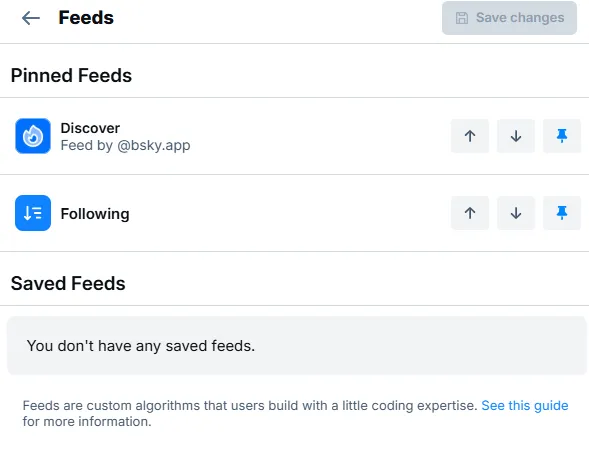
X (Twitter) Algorithmic Control:
Twitter uses a centralized algorithm controlled by the platform. This means the company determines how content is prioritized, who sees what, and when.
If you’re curious about the mechanics behind this system, here’s a deep dive into how the Twitter algorithm works.
Key Takeaways for Businesses:
For businesses, using Bluesky means a chance to present engaging, valuable, and non-salesy content to audiences who prefer authenticity over overt marketing. To thrive on Bluesky, brands must focus on delivering content that entertains, informs, or resonates rather than just promoting products.
Meanwhile, content visibility on Twitter depends on factors like engagement metrics and relevance, leaving businesses with limited control over their posts’ display. This often requires companies to invest in advertising or develop specific strategies to increase their reach.
4. Content Moderation: X (Twitter) vs Bluesky
Bluesky Content Moderation:
Bluesky’s modular moderation system offers communities the freedom to create and enforce their policies, as per Bluesky itslef. Decentralizing moderation gives communities control over what aligns with their values. This allows each community to decide how to implement moderation.
For example, a community focused on sustainable business practices can set stricter rules against greenwashing posts. Meanwhile, a network for tech startups might prioritize filtering out spam pitches to maintain productive discussions.
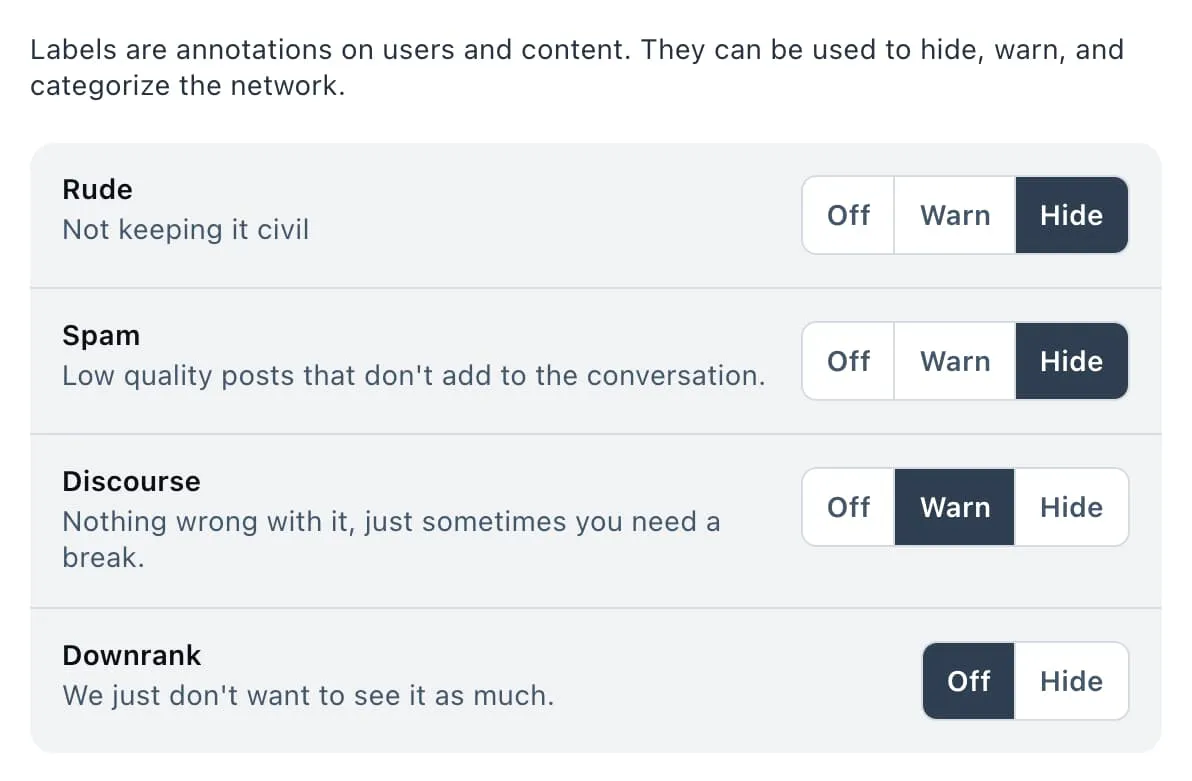
X (Twitter) Content Moderation:
Twitter, on the other hand, follows a centralized moderation model. Its uniform policies aim to create consistency but often result in a one-size-fits-all approach. For instance, businesses promoting innovative products might face the same content scrutiny as meme pages, which could lead to challenges when addressing nuanced contexts like cultural differences or industry-specific norms.
Key Takeaways for Businesses:
From a business perspective, Bluesky’s system could benefit niche brands looking for customized spaces to grow their audience. Twitter’s centralized system might appeal to companies that value uniformity and a wider reach.
5. Privacy Practices: Bluesky vs X (Twitter)
Bluesky Privacy Practices:
Bluesky puts user privacy first by limiting data collection and steering clear of targeted ads. This can build trust among privacy-conscious users and businesses looking for platforms that respect user data. For instance, a brand in the health sector might prefer a platform where users feel secure sharing sensitive information.
X (Twitter) Privacy Practices:
Twitter collects user data to serve targeted ads. It makes it a better fit for businesses aiming to maximize ad reach and engagement. While effective for marketing, this practice may deter privacy-focused users or brands dealing with sensitive data.
6. User Interaction: Bluesky vs X (Twitter)
Bluesky User Interaction:
Bluesky offers a user interface with features like replies, reposts, quotes, and likes. It allows users to engage with content in various ways. These features enable users to directly reply to posts, share them with others through reposts, add their thoughts by quoting posts, and like content to show approval.
X (Twitter) User Interaction:
Twitter follows a similar layout with replies, retweets, quote tweets, and likes. These options also allow users to engage with posts in multiple ways. Such as replying to start conversations, retweeting to share content with their followers, quote tweeting to add their perspective, and liking posts to show appreciation.
Key Takeaways for Businesses:
Both platforms offer important ways for businesses to engage with an audience. Bluesky’s modular system allows users to interact with posts in a way that feels more organic to niche communities. Twitter’s more standardized model allows brands to reach a broader audience but might lack Bluesky’s flexibility for tailored engagement.
7. Trending Topics: Bluesky vs X (Twitter)
Bluesky Trending Topics:
Bluesky has introduced a ‘Trending Topics’ feature in beta that allows users to explore popular discussions happening on the platform.
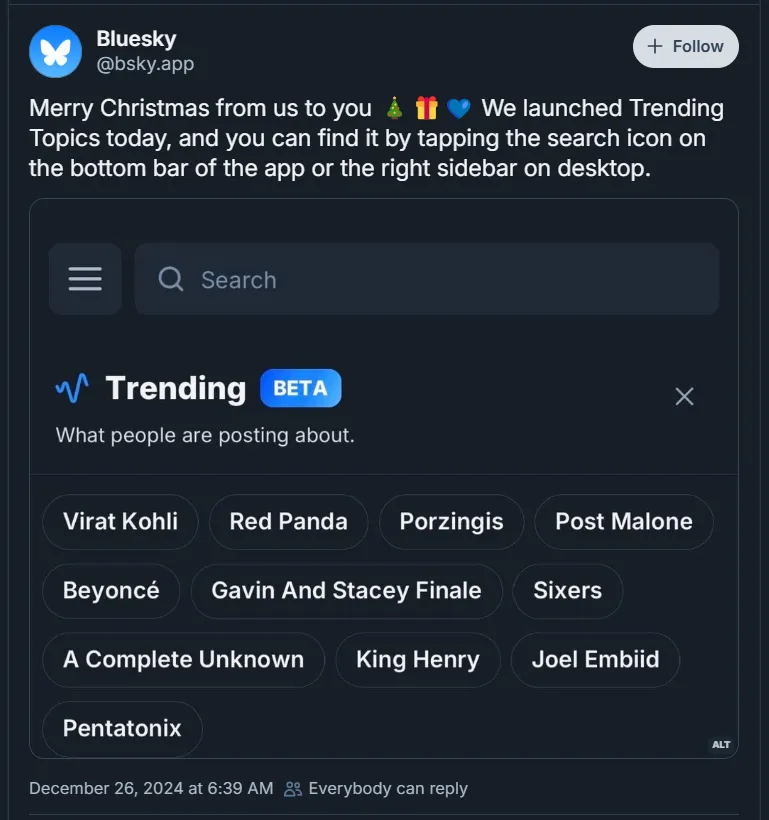
This feature helps users discover what’s currently being talked about, giving them a chance to join in on trending conversations. Since it’s in beta, the feature is still being refined, but it shows promise in providing a real-time overview of popular topics. This feature is designed to respect user preferences and algorithms.
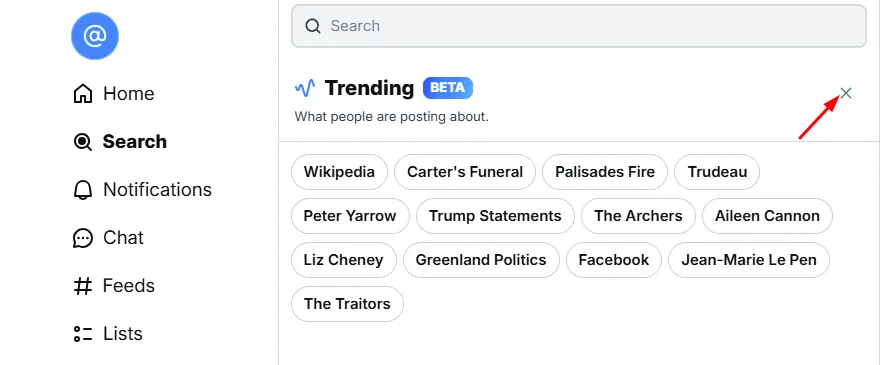
X (Twitter) Trending Topics:
Twitter offers a well-established trending topics section that shows what’s being widely discussed in real time.
This section highlights trending hashtags and topics, which makes it easy for users to see what’s happening worldwide. It’s a core part of the Twitter experience and has been for years, helping users stay up to date with the latest news, events, and conversations. To make the most of those discussions, here’s a guide on how to use hashtags effectively on Twitter.
Key Takeaways for Businesses:
From a business point of view, both platforms provide valuable opportunities for engagement. Bluesky’s new Trending Topics feature could help businesses stay ahead of emerging trends, especially as it evolves. Nevertheless, Twitter’s established trending section offers businesses immediate access to a large, global audience. It allows users to join or initiate conversations that are already gaining traction.
8. User Verification: Bluesky vs X (Twitter)
Bluesky User Verification:
Bluesky and Twitter take different approaches to user verification. Bluesky uses a domain-based system that allows users to link their accounts to a personal or business website they own.
This setup provides a unique way for users and businesses to prove authenticity by directly connecting their handles to their domain. While this can be great for branding, it might not always be practical since not everyone owns a domain. Additionally, without a universal verification badge, it can be harder to spot genuine accounts quickly.
The image below shows George Conway’s verified profile on Bluesky, where his handle is linked to a domain (gtconway.bsky.social). This highlights how Bluesky’s domain-based verification system works and helps users prove their authenticity by connecting their accounts to a website they own.
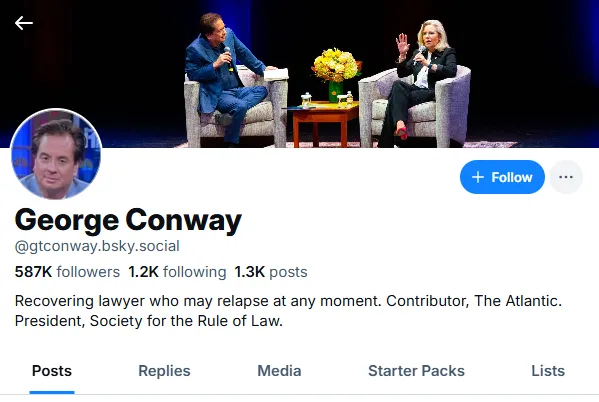
X (Twitter) User Verification:
On the other hand, Twitter offers a centralized verification system, easily recognized by its blue checkmark. This badge was once reserved for notable accounts but is now available to anyone subscribing to its premium service.
The blue tick is familiar and boosts credibility, which makes it easier for businesses to appear trustworthy. However, its accessibility to all subscribers has led to criticism about its reliability.
But if you are still interested in getting verification, you can explore the steps and requirements in our detailed blog on how to get verified on Twitter.

Key Takeaways for Businesses:
When choosing between Bluesky and Twitter, businesses must weigh the benefits of Bluesky’s personalized but less standardized domain-based system against Twitter’s familiar yet subscription-based verification. Bluesky is ideal for brands looking for customized branding tied to their domain, while Twitter’s blue checkmark offers broader credibility with faster recognition.
9. Post Scheduling: Bluesky vs X (Twitter)
Bluesky Post Scheduling:
Bluesky does not currently offer a native post-scheduling feature. To schedule posts, users need to rely on third-party tools that integrate with the platform. For instance, SocialPilot enables users to plan and schedule their Bluesky posts alongside other social media content. It helps maintain a consistent presence without switching between multiple apps.
X (Twitter) Post Scheduling:
In contrast, Twitter provides a native scheduling feature through its X Pro subscription. Most third-party scheduling tools also support Twitter scheduling. This allows users to schedule organic and promoted posts to go live at specific dates and times up to a year in advance.
Key Takeaways for Businesses:
When comparing the platforms, Twitter’s native scheduling is a major advantage for businesses that prioritize simplicity and time-saving features. Bluesky users, however, can still benefit from third-party tools like SocialPilot to plan their content, which offers flexibility across multiple platforms.
Ultimately, businesses should consider whether a native feature or an integrated tool better fits their workflow. The Bluesky platform might not be a limitation for those already using external scheduling software. On the other hand, for brands seeking an all-in-one solution, Twitter’s native scheduling is hard to overlook.
10. Advertising Model: Bluesky vs X (Twitter)
Bluesky Advertising Model:
Bluesky does not run ads on its platform and focuses only on giving users an ad-free experience. This means users can enjoy content without interruptions from advertisements. By avoiding ads, Bluesky prioritizes community engagement and content quality over generating revenue from ads.
X (Twitter) Advertising Model:
Twitter relies on ad revenue and shows users ads based on their interests and behavior. These ads can appear in timelines and search results, which makes it easier for businesses to reach specific audiences. The ability to target ads means businesses can engage users who are more likely to be interested in their products or services.
Key Takeaways for Businesses:
For businesses, Twitter’s model gives the option to run ads to reach a broad audience. Bluesky’s ad-free environment may appeal to businesses that want to focus on community interaction without ads disrupting the experience.
What’s Next For X (Twitter) and Bluesky?
X and Bluesky are still evolving, each bringing its unique take on social media. X offers businesses a large user base and features like ads and monetization. It’s great for those who want broad reach and the ability to connect with people quickly. On the other hand, Bluesky focuses more on user control and a decentralized approach. It’s an appealing option for those looking for a more personal, ad-free experience.
Managing social media content across multiple platforms can become tricky as these platforms grow. This is where tools like SocialPilot can help you. It allows businesses and creators to schedule posts, track performance, and manage multiple accounts from one place. It can make it easier to keep up with everything happening on X, Bluesky, or any other platform you use.
Ultimately, both X and Bluesky offer something different, so it depends on what you’re looking for. If you’re managing content across different platforms, using a tool like SocialPilot can help keep things organized and save you time.


